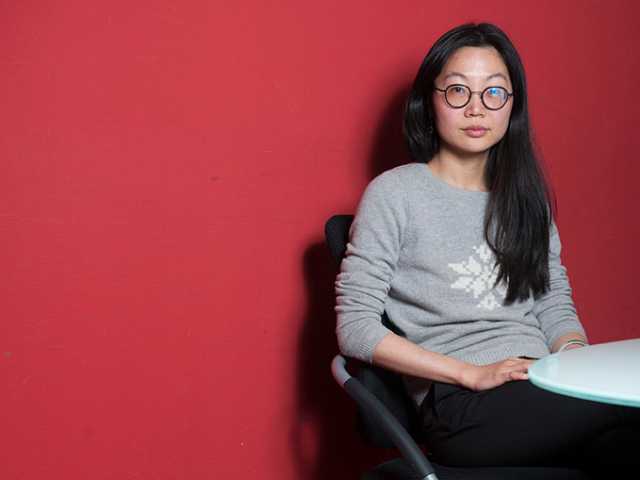Interview: Yingjie Yuan on how firms can manage 'star' employees
| Date: | 07 February 2018 |
| Author: | Yingjie Yuan |

After spending time in the Netherlands for her PhD, Yingjie Yuan spent several months at Penn State University, only to come back to the Netherlands. She accepted a position as Assistant Professor in Management and Organization Psychology and started her tenure track in 2016.
Q: Why did you choose Groningen?
A: I gladly accepted the offer based on the fit I see between myself and Groningen both in terms of research topics as well as the city itself. From journals, conferences, and seminars I have learned about research interests of the HRM/OB group in Groningen—teams, creativity and innovation, diversity, and information processing. What appealed to me was not only the fit between my research interests and those of the HRM/OB faculty, but also the high quality of research in this group—as reflected in the publication outcomes. And Groningen as a city is attractive to my husband and me due to its green urbanism. We both love nature and in Groningen we find all the urban facilities we need and many “green spots” in and around the city.
Q: Could you tell us more about your your career so far?
A: Before I joined FEB, I completed my PhD study at the Rotterdam School of Management, where I finished my dissertation on the emergence of team creativity from the composition of individual creative sources embedded in network structures. In 2015, I visited Pennsylvania State University for 4 months. Before that, I received my master degree and two bachelor degrees in China. As a result, I have a diverse network of coauthors from different countries—Netherlands, US, and China.
Q: Your position is in Management and Organizational Psychology. What issues do you explore in your research?
A: In the past years, my research has dealt with one general issue: how do individuals, particularly star individuals (i.e., the most creative members in teams), shape team processes and outcomes? I mainly use a social network perspective to answer this question. For example, my PhD studies examined how star individuals embedded in team networks determine team creative outcomes and how centralised leaders embedded in team networks shape team processes and performance.
My current research includes two different streams: One is to examine individual-team dynamics at the team level by looking at how network dynamics facilitate/hinder star individuals in teams and how this impacts team decisions. I also extend this question to the corporate level by examining the dynamics of top management teams and its impact on corporate decisions such as interfirm alliance. The other research line is to explore individual-team dynamics at the individual level. Research questions include what and how individuals gain from engaging in such team dynamics, for example, working with star employees.
Q: And how about societal relevance?
A: Whilst team research has contributed substantially to the stimulation and management of collective processes, leveraging and managing the role of “extreme” individual inputs such as star employees is of vital importance for organisations. My research helps managers to understand how they might deal with star individuals in teams.
For example, my study on the impact of creative stars has generated actionable insights in how practitioners may strategically and efficiently allocate their resources to stimulate team creativity. For instance, in order to optimally utilise the potential benefits of creative stars, it is important to couple them with good team players who recognise and disseminate the star member’s inputs rather than team members who mix all disposable opinions for a middle-ground solution. Linking to prior research findings, this therefore indicates different strategies of resource allocation: either relying on the disproportionate impact of star employees or depending on the teamwork effect that synergises all members’ inputs.
My study on leaders and their impacts suggests that practitioners should adjust the role of leaders to the size of teams and the nature of central positions. Small teams have little need for coordination, and leaders who play a prominent role in these teams’ advice-giving network lower team performance because this hinders the subordinate collaboration. Larger teams, by contrast, do call for more unitary coordination from central leaders. As I extend this line of research, I hope to uncover what and how team members may benefit from engaging in team dynamics such as working with star employees.
Q: What can we expect from you in the future?
A: I hope to extend the societal relevance of my research. I presented my research at various international conferences including the Academy of Management, the Interdisciplinary Network for Group Research, the International Network for Social Network Analysis, and the International Association for Chinese Management Research. Some of my papers are in the revision processes at top-tier journals in the management field.
I also endeavour to communicate and apply my research findings to managerial practice through working with companies who are interested in my research questions. For example, in the project of creative stars in the Chinese bakery chain group, I discussed my findings with corporate managers to resolve managerial issues. By showing them the diagnosis result of team dynamics and its relationship with team creative performance to the management team, I provided suggestions on how to better stimulate team collaboration and foster higher creative performance of teams. Besides, given my cross-cultural background, I am looking forward to bringing in more collaborative opportunities with different research groups in the form of joint projects.

